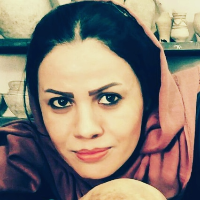Changes and Developments in the Customs of Shahr-I Sokhta Based on the Burial Tradition
Author(s):
Article Type:
Research/Original Article (دارای رتبه معتبر)
Abstract:
The customs surrounding burials hold significant importance as they shed light on the social and religious aspects of any given society. Shahr-i Sokhta is an ancient site of a sizable Bronze Age urban settlement, associated with the Helmand culture that dates back to the 3rd millennium BC. This is of great importance considering the fact that the information gathered from cemetery there proves instrumental in reconstructing the customs prevalent in this settlement. This article focuses on the changes observed in burial practices of Shahr-i Sokhta, specifically from period one to period four, and examines their correlation with the gender of the deceased. The study utilizes data obtained from excavations carried out during seven seasons between 1997 and 2003. A total of 213 burials with identifiable settlement periods were selected for the analysis. The study employed the SPSS statistical software and considered four factors: settlement periods, the number of burial objects, objects of significance, and gender. The settlement periods were treated as independent variables, while the remaining factors were dependent variables. The findings indicate a gradual increase in social class distinctions from the first period to the fourth period. Notably, these class differences are comparatively less pronounced during periods one and two.
Keywords:
Language:
English
Published:
Journal of Ancient Iranian Studies, Volume:3 Issue: 8, Winter 2023
Pages:
29 to 42
https://magiran.com/p2645975
مقالات دیگری از این نویسنده (گان)
-
Socio – Economic Analysis of Shahr-i Sokhta Period I-IV (Early to Late 3rd Millennium B.C) Based on Statistical Analysis of Goods and
Hossein Moradi *,
Journal of Archaeological Studies, -
Designing based on needs for the packaging, transportation and storage of human bones from archaeological excavations
Ramin Mohamadisefidkhani*, Zahra Rajabiun
Journal of Research on Archaeometry,



